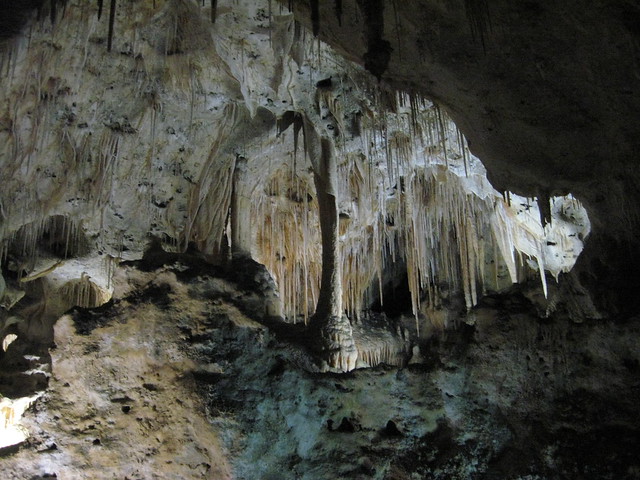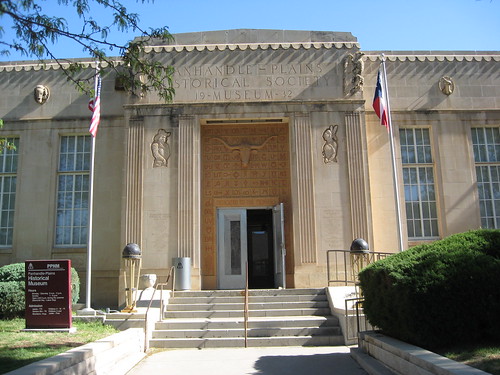
It had been a while since I had been to a museum so when one of my fellow graduate students suggested making a trip to
Panhandle-Plains Historical Museum (
Wikipedia article) I jumped on the opportunity. He had the option to make the trip a couple of months ago but had decided not to go but back then I had done some research on the museum which made the decision to go even easier when he asked. So early on the morning of May 14th a group of us set off from Lubbock, TX to take the hour and forty-five to two hour trip up to
Canyon, TX to the museum.
This museum claims to be the largest history museum in the state of Texas and I would not doubt that it is for a second. This is a pretty impressive for a state that is as obsessed with its history as Texas is. The museum is deceivingly large looking small on the outside and located on the campus of
West Texas A&M University in a fairly small town outside of
Amarillo, TX. The main focus of the museum is on the
Panhandle of Texas.
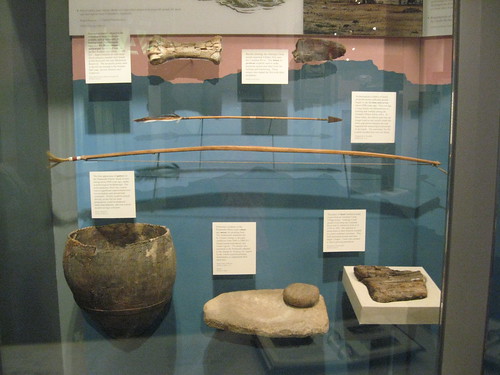
Walking into the museum you get a taste of what you are going to see in the lobby. There is a small display on Native Americans from the region a small paleontology section and a small display on history of European Settlers in the region. It cost about $10 to get in but it was well worth the price.
The first hall we walked through talked about the Native Americans that lived in the area. There were plenty of artifacts used by Native Americans to farm as well as gather and hold water and other important aspects to life. The exhibit was set up based on three aspects for living in the area, which for some reason I can't remember right now, but included things like food water and shelter, for this reason the Native American artifacts were scattered throughout the area. There is a very brief discussion on why farming is possible in the area, pumping water from the
Ogallala Aquifer, and some of the harm we are doing to the aquifer by farming using it. While this historical portion is interesting it was actually the reason we went nor is it what I am going to focus on now.

Entering into the paleontology section you are greeted by a large mural with 3 casts in front of it. These represent the panhandle during the age of mammals, I am not sure specifically sorry you get the generic title there, and include a three-toed horse as well as a
Gomphothere. There is then a quick summary of life through time starting in the
Cambrian and moving through the
Permian, in other words the
Paleozoic. Each time section has fossils that represent organisms found during those time periods, most of these are small invertebrates and since these times are poorly represented or not represented at all in Texas they are just kind of glanced over. Entering into the Permian there are many fossils that have been found in not just Texas but in the panhandle.
Now is a good time to point out that many of the actual fossils in the museum from the panhandle were found during the 30's and 40's by
Works Progress Administration (WPA) digs. These digs were "shovel-ready" jobs that
President Franklin D. Roosevelt had promised just to give people jobs so they had money so they could spend said money to improve the economy. Many of these fossils came from nearby
Palo Duro Canyon State Park (
Wikipedia article, and
tourist page) which is why they are stored in Canyon, TX. With as many Permian rocks as are in the State Park the Permian fossils are under represented. Part of this is because while Permian fossils are well known from the state they are actually very poorly represented in the Quartermaster Formation, the Permian aged rocks in the state park.
The Triassic fossils do not suffer the same fate. This is because the Triassic is represented by the
Dockum Group which in the Panhandle has produced plenty of fossils and still does today, this is the work that the Museum of Texas Tech University Paleontology Division (MoTTU-P) focuses on. So there are plenty of
phytosaurs and
metoposaurs on display in the Panhandle-Plains Museum. The remainder of the
Mesozoic is underrepresented in the Panhandle (there is some Cretaceous aged rock on the South to Southeastern edge of the
caprock) so there are very few fossils on display from the Jurassic and Cretaceous. They did have some
sauropod fossils, likely casts, as well as a few other Mesozoic casts including the centerpiece of the paleontology wing a cast of
Allosaurus. The one area that did anger me was they had the sauropod fossils labeled as "Brontosaurus", for those who don't know "Brontosaurs" has long since been synonomized with
Apatosaurus (go type Brontosaurus into Wikipedia), this set out a minor moment of rage, the fact that the skull was of a
Diplodocid didn't help much.
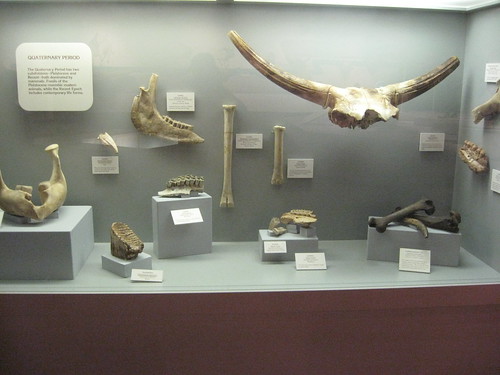
But a major portion of the Paleontology exhibit focused on the fossil mammals that had been found in the area. The panhandle is home to three
North American Land Mammal Ages (NALMA);
Clarendonian,
Hemphillian, and
Blancan. These were where many of the fossils were from and there was case after case of fossils from these ages. I can tell that the exhibit hadn't been updated in a while because many of the genus and species names are outdated and have been synonomized with others, I discuss this on the appropriate images in my
Flickr set on the museum. I was impressed by this massive display of mammal fossils because this is not typically what you see at most museums but if this is what they have the most of why not. They also had a display talking about
horse evolution something which is impressive for West Texas.
Moving on from the fossils there is a brief overview of the geology of Palo Duro Canyon, something which I am planning a post on since we went there right after the museum. There is then a display on windmills, if you really want to see something on that come down to Lubbock and go to the
American Wind Power Center (
Wikipedia article), and old cars. The second floor had lots of guns, up through the better part of the Cold War, then a discussion on oil drilling, saddles, and lots of art. The basement had a few hidden gems including taxidermy displays of animals that live or used to live in the area. We did not get to see Pioneer Town because it was being renovated.
Despite its few faults the museum is worth stopping by for anyone in the South Plains and if you are in the area for any reason it is worth stopping by. We got there around 10am and left the museum at 2pm so make sure to leave plenty of time. I also took over 600 pictures, mostly because I am a huge nerd, but make sure you are ready to take lots of pictures. I think the museum gets forgotten about by people who go to Palo Duro State Park but they should really take the time to go see the museum. Sorry this post ended up being so long but when I see a hidden gem I want to make sure other people notice it as well. All images included in the post were taken by the author and if you wish to see more you can go to my
Flickr set on the museum or for pictures that include those from Palo Duro my
Flickr set that includes both.
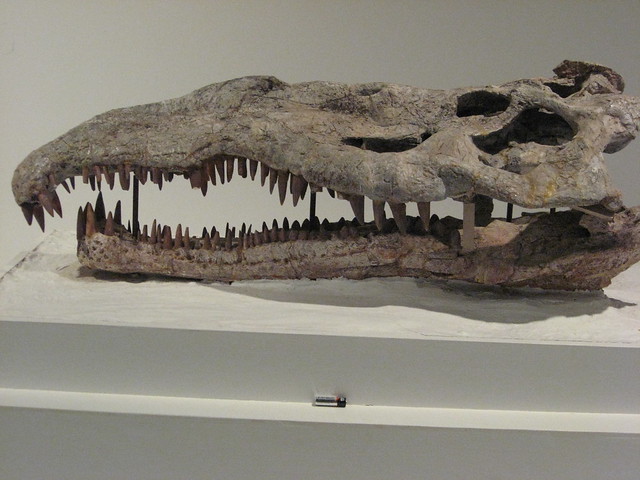 Museum visits page
Museum visits page








